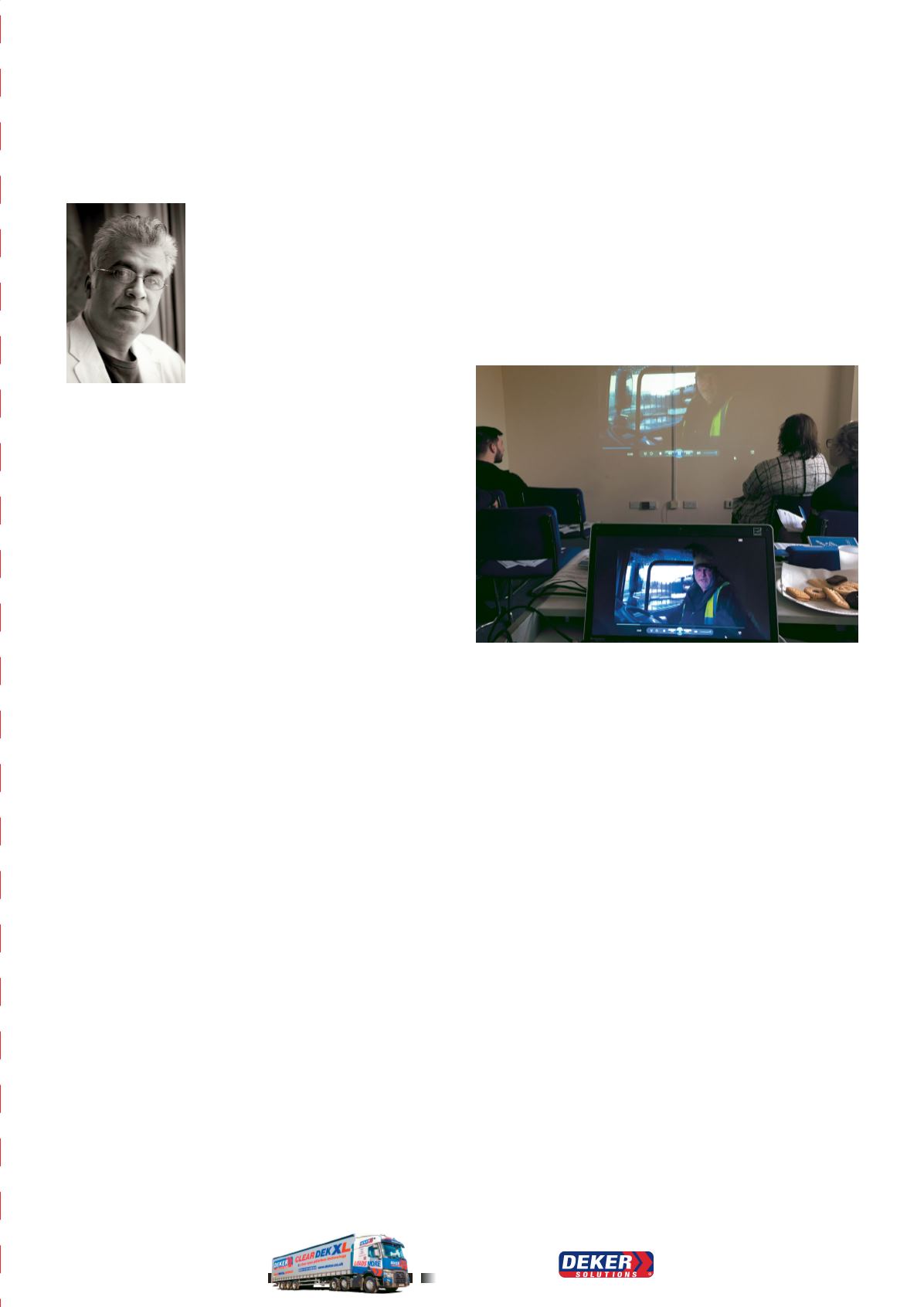
 www.truckandtrack.com
www.truckandtrack.com
Spring 2019
Truck and Track
71
DANGEROUS GOODS
Several years ago, The Carriage of
Dangerous Goods by Road in Europe as
definedbyADR[Accordeuropéenrelatif
au transport international des marchandises Dangereuses par
Route] incorporated security in its framework andenforcement
protocol.
Naturally, when viewing the issue of Security in the Carriage
of Dangerous Goods, one tends to focus upon terrorism, but
considerations must also be given to animal rights extremists,
organised crime [fuel and vehicle theft], controlled substances
and precursors used in illegal drug manufacture and improvised
weapons and, of course, vandalism and environmental risks.
Manufacturers, Consignors and Consignees, as well as Logistics
Operators working with Dangerous Goods [and also those working
with non-ADR], should have security risk assessments in place,
thinking about what can gowrong and having appropriate counter-
measures in place. The security risk assessment is the first stage in
evaluating risk[s] and, from this, comes the counter-measures and
training to help confront [and mitigate] these risks in the supply
chain.
When ADR incorporated security into the legislation, a term HIGH
CONSQUENCEDANGEROUSGOODS [HCDG] came intoplay. HCDG’s
are a sub-class of Dangerous Goods that pose specific problems
should they fall into the wrong hands. The majority of HCDG’s are
Bulk products [with “Bulk” being defined as contained in receptacle
size of 3,000 litres or greater].
Product Classes 1 [Explosive], Class 7 [Radioactive] both as bulk and
as packages are obviously classed as HCDG.
Though Product Classes 2 [Gas], 3 [Flammable Liquids], 4
[Flammable and Reactive Solids], Class 5.1 [Oxidisers], 5.2 [Organic
Peroxides], 6 [Toxic] and 8 [Corrosive] are also classed as HCDG in
bulk.
Product Classes 2.3 [Toxic Gases], 6.1 [Toxic of Packing Group 1]
and 6.2 [Biologically Infectious of CAT ‘A’] are classed as HCDG in
packages.
The reason why bulk is an issue is that, where a tanker is carrying
dangerous goods, hijack or theft is a very troubling situation,
though one must not overlook the products that are HCDG in
packages either.
Some of the key factors [but not exclusive] for Chemical Security
under ADR with High Consequence Dangerous Goods [HCDG] are –
■■
Ensuring all drivers [and staff] are checked out in the pre-
employment stage.
■■
Ensuring any temporary or agency staff are checked out prior to
deployment.
■■
Ensuring all drivers carry robust photo identification.
■■
Ensuring your site has awritten risk assessment that is reviewed
regularly.
■■
Ensuring you have taken robust site security measures from
the risk assessment, and documented them into a regularly
reviewed depot security plan.
■■
When loading material out from your depot or warehouse, you
check the photo identification of the driver collecting the goods
with the person requesting the movement of dangerous goods.
■■
Drivers en-route or delivering goods, ensure that they call their
depot should they perceive any suspicious activity.
■■
Drivers must never pick up hitchhikers or strangers asking for a
lift.
■■
Consideration of vehicle tracking and immobilisation
equipment.
■■
Drivers should vary their routes if on specific and regular runs,
and ensure that care is taken in secure parking for their breaks
and overnight rest.
■■
Ensure all staff remain vigilant and look for any unexplained
behavioural changes in work colleagues.
■■
Be suspicious of any deliveries requested for private addresses,
especially if it is fertilizer material, toxic weedkillers, as well as
‘accelerants’ such as flammable materials.
■■
Precautions taken when asked to “pull over” when carrying
Dangerous Goods.
■■
Ensure drivers have been trained on these security measures.
In my opinion, these also act as “good discipline” for the carriage of
non-ADR materials, due to the increasing criminal activity we are
seeing, especially with vehicle and fuel theft, as well as the carriage
of “high value” items.
High Consequence Dangerous
Goods [HCDG] in the Dangerous
Goods Supply Chain
by Ali Karim
In this issue, our Dangerous Goods Columnist, Ali Karim FRSC FCILT
looks at the issues surrounding the safe carriage of
High Consequence Dangerous Goods [HCDG]
within the Dangerous Goods Supply Chain
Ali Karim
HCDG Training drivers
01543 420 121
www. deker .co.ukVEHICLE
FINANCE AND
LEASING



















